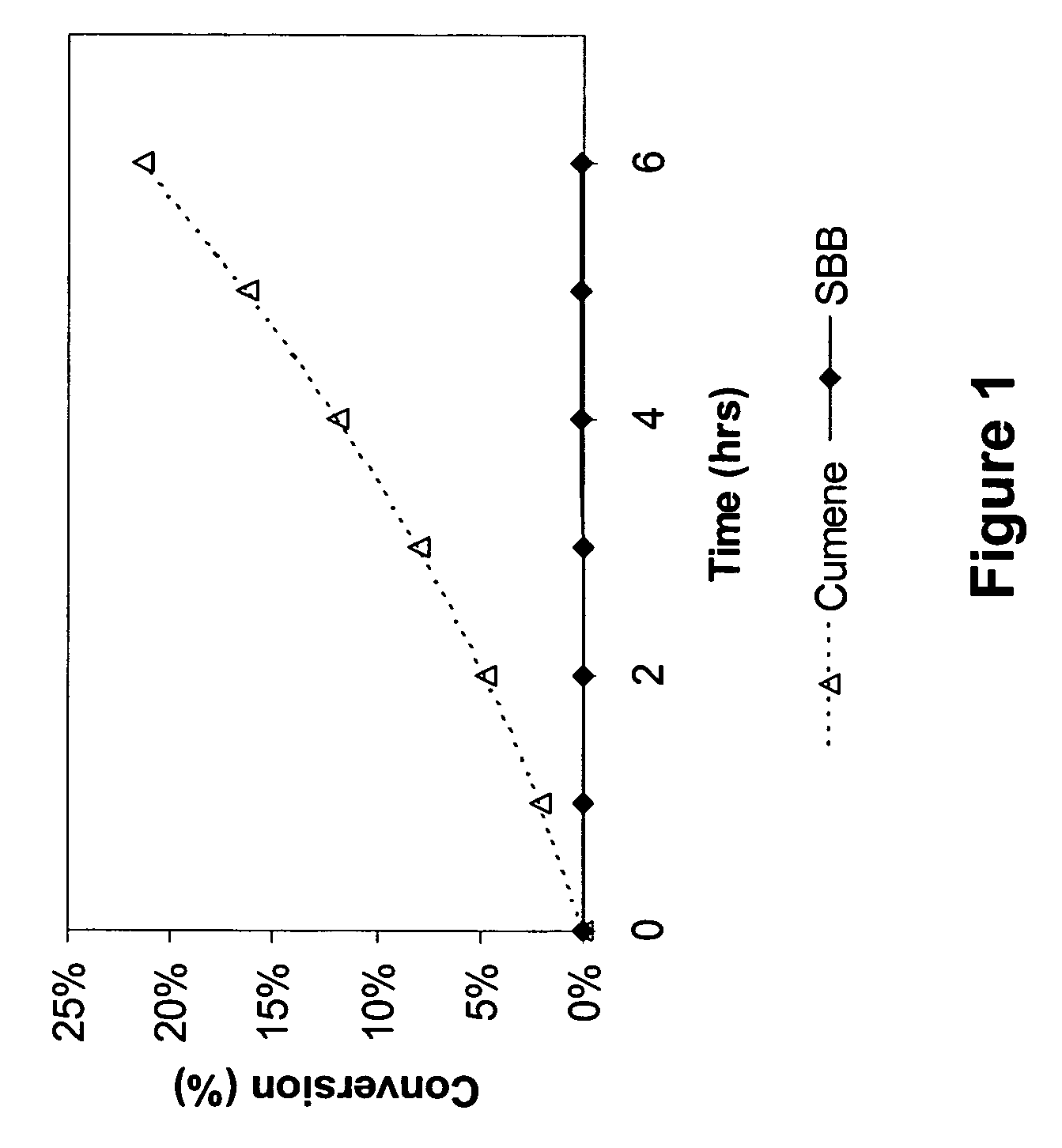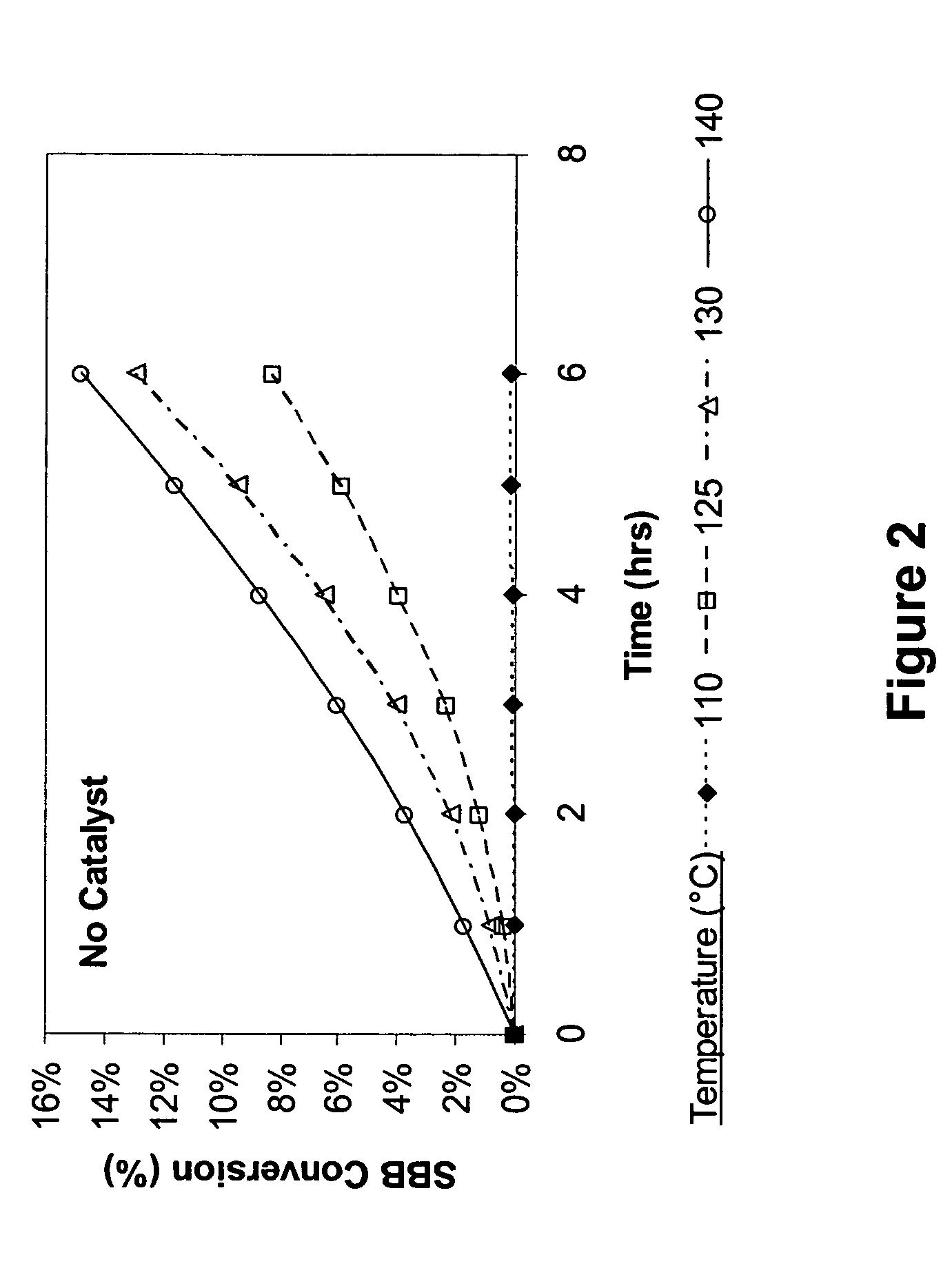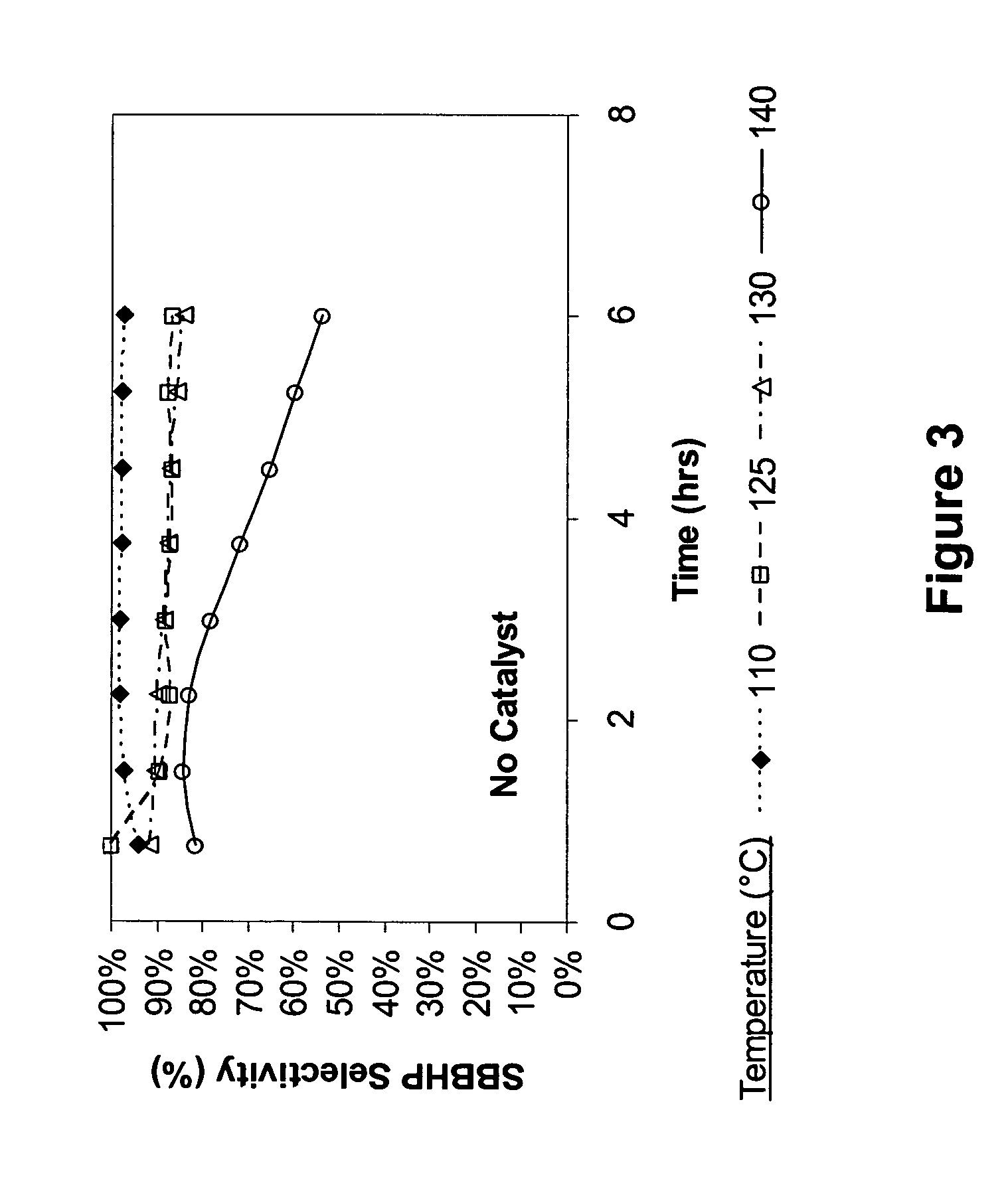Selective oxidation of alkylbenzenes
a technology of alkylbenzene and selective oxidation, which is applied in the field of selective oxidation of alkylbenzene, can solve the problems of poor selectivity to the desired phenol and ketone products, increased propylene relative to butene cost, and limited use of hock reaction to make phenol
- Summary
- Abstract
- Description
- Claims
- Application Information
AI Technical Summary
Benefits of technology
Problems solved by technology
Method used
Image
Examples
example 1
Oxidation of Cumene and Sec-butylbenzene (SBB) Without Catalyst
[0074]To a 250-ml round bottom flask fitted with a condenser, stirrer and an air sparger, was charged 100 g of sec-butylbenzene (99.9% sec-butylbenzene, available from TCI) or cumene (99.9% cumene, available from TCI). The flask was heated using a temperature-controlled heating mantle. The reaction temperature was 110° C. and the pressure was atmospheric. The air flow rate was maintained approximately at 220 cc / min. Every 45 minutes, a small aliquot of the reaction mixture was removed from the flask and analyzed by GC. The results are presented in FIG. 1, which shows that there was no conversion of SBB under these conditions, while cumene conversion was approximately 3.4% per hour under the same conditions.
example 2
Effect of Temperature on SBB Oxidation Without Catalyst
[0075]To a 250-ml round bottom flask fitted with a condenser, stirrer and an air sparger, was charged 100 g of sec-butylbenzene (available from TCI). The flask was heated using a temperature-controlled heating mantle. Different temperatures were evaluated at 110° C., 125° C., 130° C. and 140° C. The reaction pressure was atmospheric. The air flow rate was maintained approximately at 220 cc / min. Every 45 minutes, a small aliquot of the reaction mixture was removed from the flask and analyzed by GC. The results are shown in FIGS. 2 and 3, which show that SBB conversion takes place at temperatures higher than 110° C., but as the temperature gets higher, selectivity to sec-butylbenzene hydroperoxide (SBBHP) decreases.
example 3
Effect of Temperature on SBB Oxidation—With Catalyst
[0076]To a 250-ml round bottom flask fitted with a condenser, stirrer and an air sparger, was charged 100 g of sec-butylbenzene (SBB, available from TCI) and 0.375 g N-hydroxyphthalimide (NHPI, available from Aldrich). The flask was heated using a temperature-controlled heating mantel. Different reaction temperatures were evaluated, at 90° C., 100° C., 110° C., 120° C., 125° C., 140° C. The reaction pressure was atmospheric. The air flow rate was maintained approximately at 220 cc / min. Every 45 minutes, a small aliquot of the reaction mixture was removed from the flask and analyzed by GC. The results are shown in FIGS. 4 and 5, which show that SBB conversion occurred at temperatures as low as 90° C. and proceeded with high selectivity to sec-butylbenzene hydroperoxide (SBBHP) at temperatures as high as 125° C.
PUM
| Property | Measurement | Unit |
|---|---|---|
| temperature | aaaaa | aaaaa |
| temperature | aaaaa | aaaaa |
| temperature | aaaaa | aaaaa |
Abstract
Description
Claims
Application Information
 Login to View More
Login to View More - R&D
- Intellectual Property
- Life Sciences
- Materials
- Tech Scout
- Unparalleled Data Quality
- Higher Quality Content
- 60% Fewer Hallucinations
Browse by: Latest US Patents, China's latest patents, Technical Efficacy Thesaurus, Application Domain, Technology Topic, Popular Technical Reports.
© 2025 PatSnap. All rights reserved.Legal|Privacy policy|Modern Slavery Act Transparency Statement|Sitemap|About US| Contact US: help@patsnap.com



